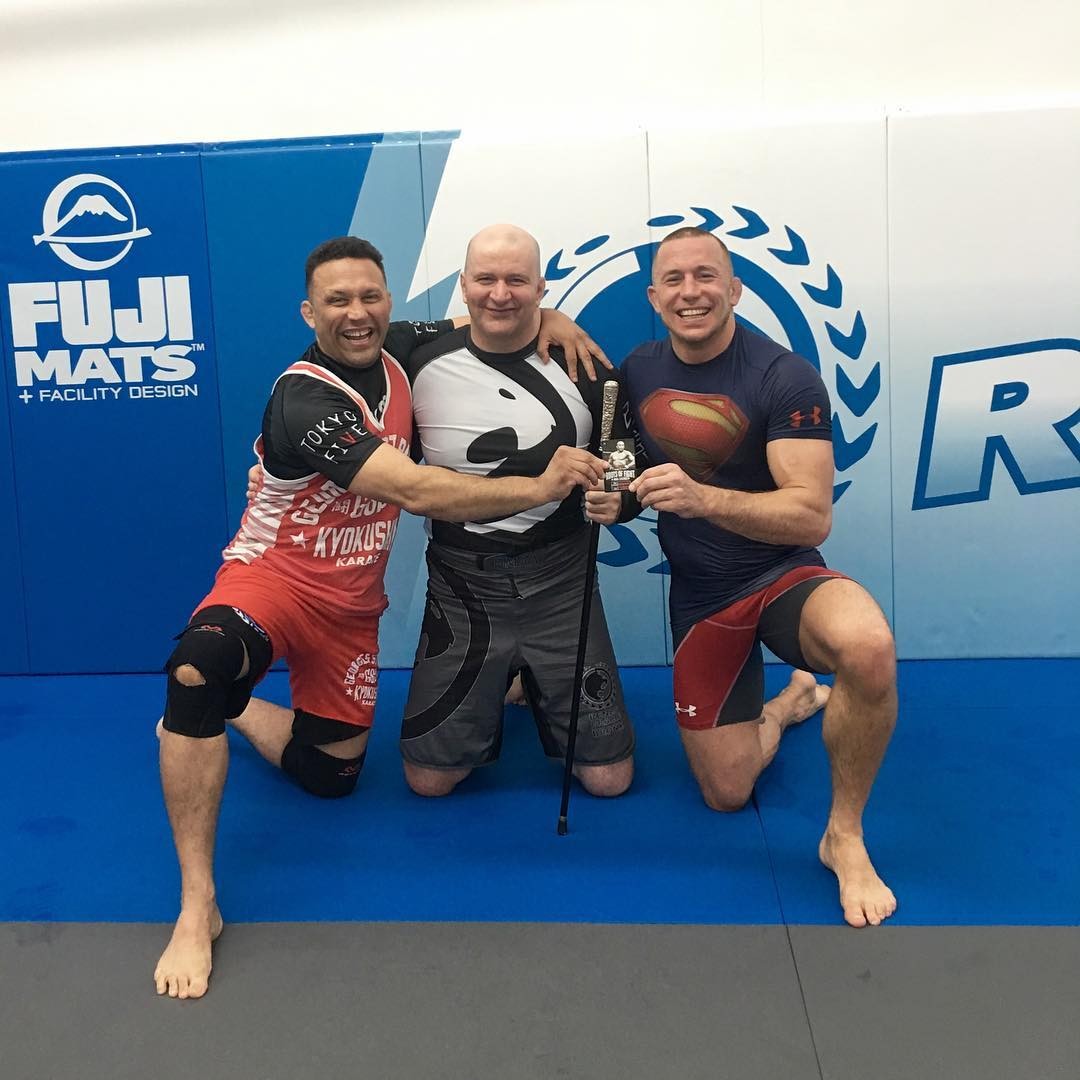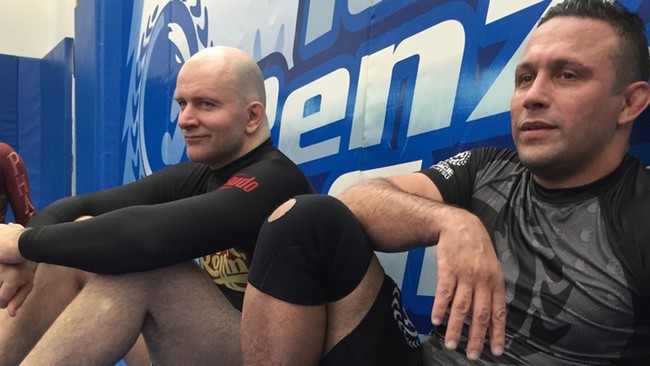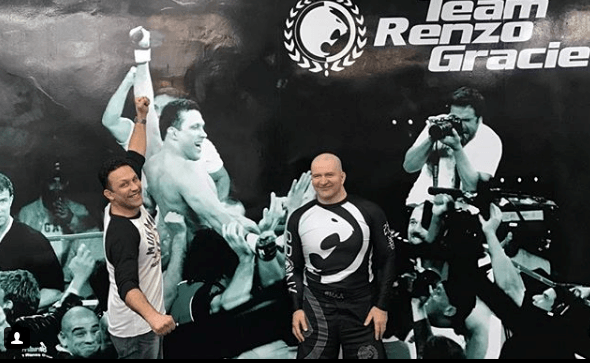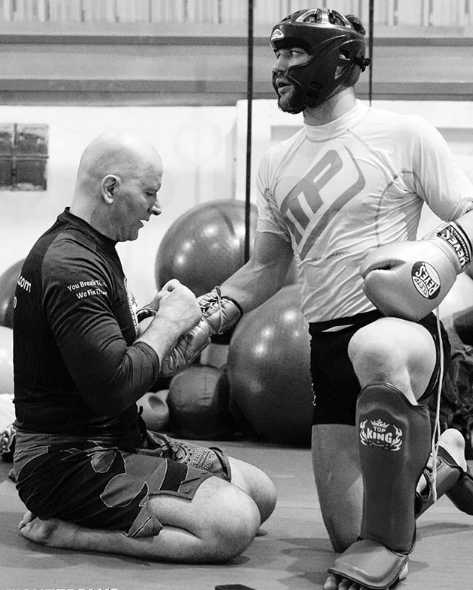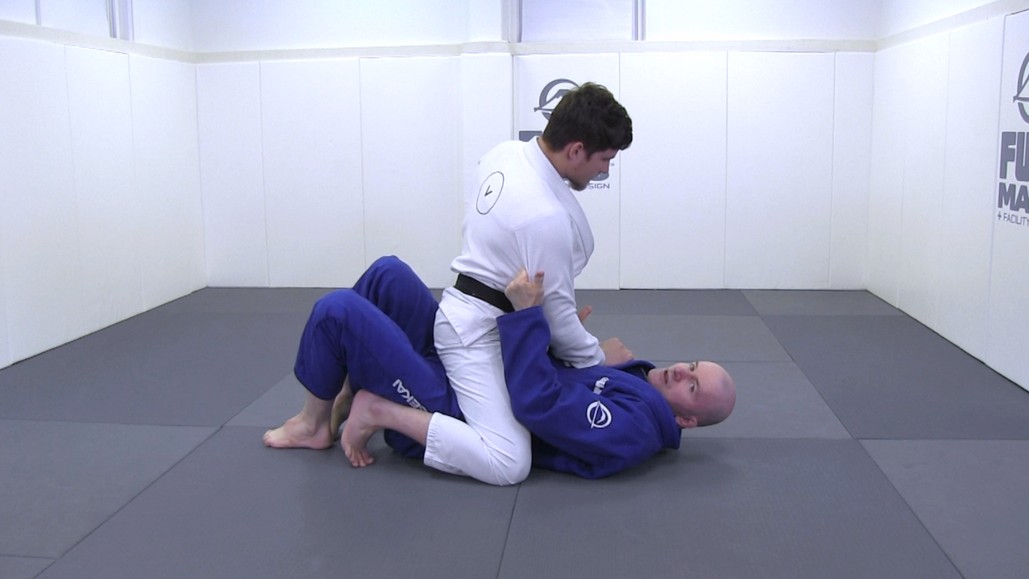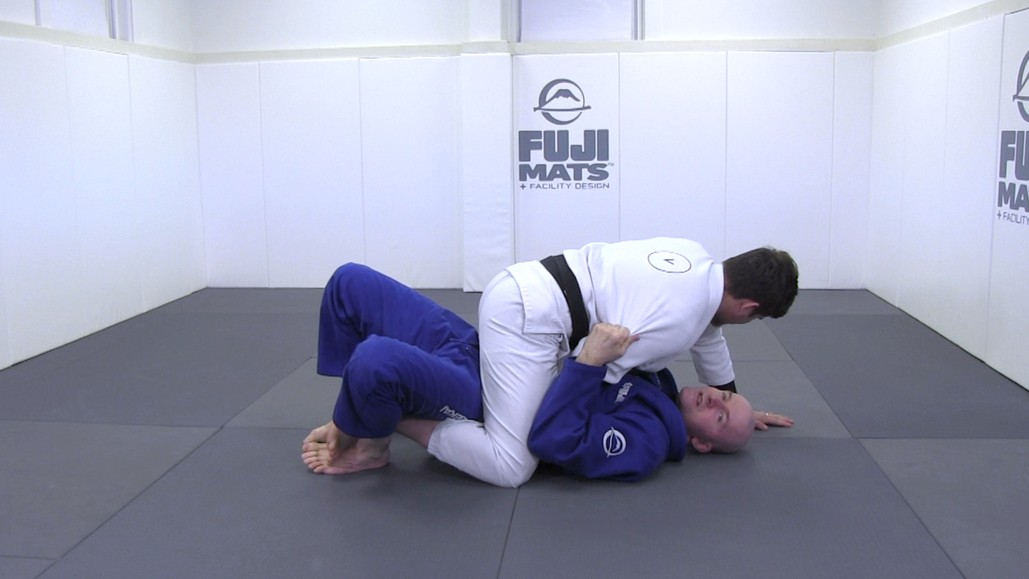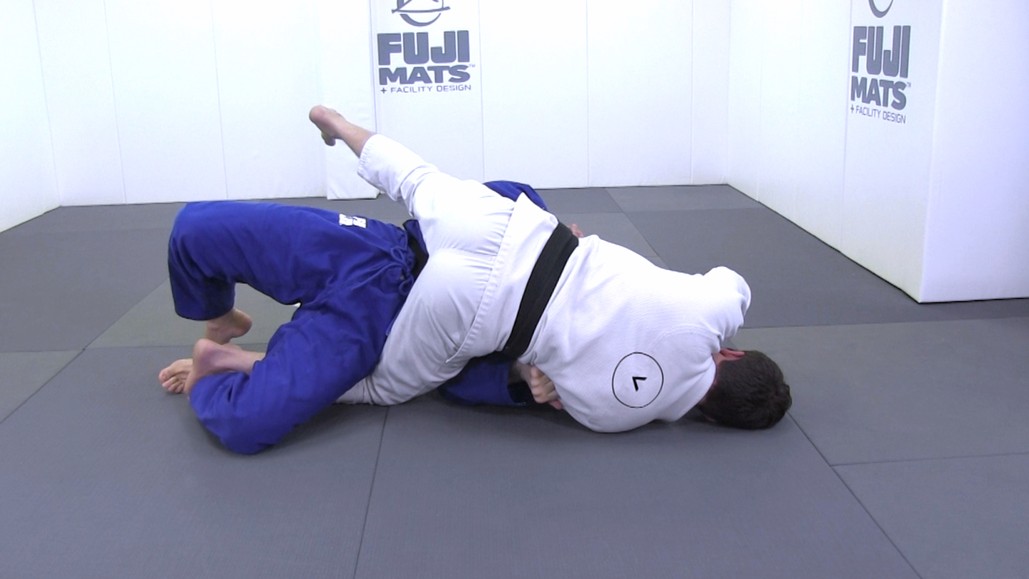ProductContent
Pin Escapes & Turtle Escapes: BJJ Fundamentals - Go Further Faster by John Danaher
Learn The Techniques & Concepts That Will Make You Almost Un-Submit-Able Quicker Than You (Or Your Instructor) Ever Thought Possible: Over 10 Hours Of Material
- The Most Complete System Of Jiu-Jitsu Fundamentals Ever Created - From The Best Instructor On Earth
- The aim of the GO FURTHER FASTER series is twofold: First, to give you the technique and insight to get to a higher level in the sport and second, to reduce the time ordinarily taken to get there
- The series is built around a fundamentals program that is not focused only on moves, but upon IDENTIFYING THE CORE POSITIONAL SKILLS REQUIRED FOR FIRST COMPETENCE, AND ULTIMATELY EXCELLENCE, IN THE SPORT
- Learn the foundation upon which all progress in the sport of Jiu Jitsu is made
- FOUNDATIONALISM is the idea that all of the skills of Jiu jitsu are supported upon a set of foundational BODY MOVEMENTS, TECHNICAL SKILLS, CONCEPTS, TACTICS and GRAND STRATEGY - This is your chance to learn the true foundation of Jiu Jitsu!
Course Content
Volume 1
CHAPTER TITLE
START TIME
| introduction | 0 - 6:56 |
| Escapes Overview | 6:56 - 43:37 |
| Defense & Escapes - General Reflections | 43:37 - 49:50 |
| Your First goal in Jiu Jitsu: Pin Escapes | 49:50 - 51:25 |
| Pin Escapes | 51:25 - 56:11 |
| Escape is a Responsibility | 56:11 - 57:27 |
| 3 Modes of Pin Escape in Jiu Jitsu | 57:27 - 1:01:46 |
| Minimal Escapes & Positive Escapes | 1:01:46 - 1:06:20 |
| The 2 Elements of Pinning in Jiu Jitsu | 1:06:20 - 1:13:31 |
| Single Biggest Insight Required To Escape Pins | 1:13:31 - 1:24:06 |
| Essential Body Movements Required For Pin Escapes | 1:24:06 - 1:25:21 |
| Bridging | 1:25:21 - 1:33:00 |
| Bridging 2 | 1:33:00 - 1:37:07 |
| Walking Bridges | 1:37:07 - 1:38:47 |
| Shrimping | 1:38:47 - 1:47:20 |
| Back Heisting | 1:47:20 - 1:51:09 |
| Sitting | 1:51:09 - 1:54:33 |
| Shoulder Rolling | 1:54:33 - 1:57:26 |
| Inverted Spin | 1:57:26 - 1:59:46 |
| Putting Body Movements Together | 1:59:46 - 2:03:15 |
Volume 2
CHAPTER TITLE
START TIME
| Bridging Escape From Mounted Position (UPA) | 0 - 15:02 |
| Bridging Escape From Mounted Position 2 | 15:02 - 19:01 |
| Bridging Escape From Mounted Position 3 | 19:01 - 22:04 |
| Bridging Escape From Mounted Position 4 | 22:04 - 25:18 |
| Bridging Escape From Mounted Position 5 | 25:18 - 30:01 |
| Elbow Escape From Mounted Position | 30:01 - 40:45 |
| Elbow Escape From Mounted Position 2 | 40:45 - 47:34 |
| Elbow Escape From Mounted Position 3 | 47:34 - 58:29 |
| Elbow Escape From Mounted Position 4 | 58:29 - 1:07:24 |
| Elbow Escape From Mounted Position 5 | 1:07:24 - 1:13:48 |
| Elbow Escape From Mounted Position 6 | 1:13:48 - 1:18:12 |
| Elbow Escape From Mounted Position 7 | 1:18:12 - 1:21:35 |
Volume 3
CHAPTER TITLE
START TIME
| Elbow Escape From Mounted Position - Ankle Trap Method | 0 - 6:50 |
| Elbow Escape From Mounted Position - Ankle Trap Method 2 | 6:50 - 11:14 |
| Elbow Escape From Mounted Position - Ankle Trap Method 3 | 11:14 - 15:37 |
| Putting It All Together | 15:37 - 22:50 |
| Foot Fighting From Bottom Mount | 22:50 - 28:42 |
| The Goal of Foot Fighting: The Long/Short Position | 28:42 - 35:20 |
| Dealing With High Mounts | 35:20 - 41:21 |
| The Problem of Back Exposure When Escaping Mount | 41:21 - 46:54 |
| Elbow Escapes From Side Position Introduction | 46:54 - 56:40 |
| Elbow Escapes From Side Position 2 | 56:40 - 1:00:49 |
| Elbow Escapes From Side Position 3 | 1:00:49 - 1:07:10 |
| Elbow Escapes From Side Position 4 | 1:07:10 - 1:14:57 |
| Elbow Escapes From Side Position 5 | 1:14:57 - 1:24:10 |
| Elbow Escapes From Side Position 6 | 1:24:10 - 1:28:37 |
| Elbow Escapes From Side Position 7 | 1:28:37 - 1:30:59 |
Volume 4
CHAPTER TITLE
START TIME
| Knee Escapes From Side Position | 0 - 6:07 |
| Knee Escapes From Side Position 2 | 6:07 - 9:23 |
| Knee Escapes From Side Position 3 | 9:23 - 16:49 |
| Knee Escapes From Side Position 4 | 16:49 - 21:23 |
| Knee Escapes From Side Position 5 | 21:23 - 27:32 |
| Knee Escapes From Side Position 6 | 27:32 - 33:52 |
| Knee Escapes From Side Position 7 | 33:52 - 40:51 |
| Knee Escapes From Side Position 8 | 40:51 - 44:38 |
| Knee Escapes From Side Position 9 | 44:38 - 49:29 |
| Knee Escapes From Side Position 10 | 49:29 - 52:49 |
Volume 5
CHAPTER TITLE
START TIME
| A General Theory of Framing and Space | 0 - 9:54 |
| A General Theory of Framing and Space 2 | 9:54 - 15:02 |
| A General Theory of Framing and Space 3 | 15:02 - 19:10 |
| 3 Most Important Frame From Bottom Side Control For Escape | 19:10 - 38:06 |
| Knee Escape: Single Leg Cut Back Finish | 38:06 - 42:03 |
| Knee Escape: Single Leg To The Back | 42:03 - 46:55 |
| Knee Escape: Single Leg To Half Guard | 46:55 - 52:04 |
| Knee Escape: Single Leg To Butterfly Guard | 52:04 - 54:44 |
| Knee Escape: Single Leg To Full Guard | 54:44 - 57:11 |
Volume 6
CHAPTER TITLE
START TIME
| High Leg Escape From Side Pin | 0 - 5:31 |
| Details of High Leg Escape | 5:31 - 11:19 |
| Ankle Trap Escape From Side Pin | 11:19 - 23:44 |
| Shoulder Roll Escape From Side Pin | 23:44 - 32:41 |
| Creating Effective Frames Under Pins | 32:41 - 38:30 |
| The Critical Importance of Knee Entry Angle and Position | 38:30 - 47:25 |
| Single Most Important Tool for Escapes From Bottom Position in Jiu Jitsu | 47:25 - 51:12 |
| Understanding The Crucial Importance of Insertion Points | 51:12 - 57:24 |
| Spinning Escape From Side Control | 57:24 - 1:04:42 |
| Prop Escapes From Side Control | 1:04:42 - 1:13:59 |
Volume 7
CHAPTER TITLE
START TIME
| Escaping From Side Pins Where Opponent Sits Out | 0 - 9:05 |
| Escaping From Side Pins Where Opponent Sits Out 2 | 9:05 - 14:43 |
| Escaping From Side Pins Where Opponent Uses Reverse Sit Out | 14:43 - 28:00 |
| Escaping From Knee on Belly Position | 28:00 - 36:36 |
| Ankle Trap Escape From Knee on Belly | 36:36 - 44:36 |
| Escaping From North-South Position | 44:36 - 51:16 |
| 3 Different Kinds of North South Position | 51:16 - 56:38 |
| Escaping North South: Transition Escape | 56:38 - 1:02:24 |
| Escaping Double Over North/South | 1:02:24 - 1:06:38 |
| Escaping Double Under North/South | 1:06:38 - 1:16:31 |
| Escaping Double Under North/South Part 2 | 1:16:31 - 1:22:02 |
| Escaping Over Under North/South | 1:22:02 - 1:27:49 |
Volume 8
CHAPTER TITLE
START TIME
| Rear Mount Escapes | 0 - 7:13 |
| Rear Mount Escapes Sliding Elbow Escape | 7:13 - 21:58 |
| Rear Mount Escapes Sliding Elbow Escape 2 | 21:58 - 26:48 |
| Rear Mount Escapes Sliding Elbow Escape 3 | 26:48 - 30:34 |
| Rear Mount Escapes Sliding Elbow Escape 4 | 30:34 - 36:08 |
| Escapes From Turtle Position | 36:08 - 46:20 |
| Shoulder Roll Escapes | 46:20 - 1:00:01 |
| Shoulder Roll Escapes 2 | 1:00:01 - 1:02:36 |
| Countering The Seatbelt: Inside Leg Escape | 1:02:36 - 1:17:34 |
| Countering The Seatbelt: Inside Leg Escape 2 | 1:17:34 - 1:20:33 |
| Countering The Seatbelt: Inside Leg Escape 3 | 1:20:33 - 1:24:37 |
Learn The Techniques & Concepts That Will Allow You To Escape From Virtually Any Pin Quicker Than You (Or Your Instructor) Ever Thought Possible: Over 10 Hours Of Material
The Most Complete System Of Jiu-Jitsu Fundamentals Ever Created - From The Best Instructor On Earth
From John Danaher Himself:
I am very happy to announce the release of my new instructional video series - GO FURTHER FASTER in conjunction with BJJ Fanatics.
This series covers the all important fundamentals of BJJ.
The aim of the GO FURTHER FASTER series is twofold: First, to give you the technique and insight to get to a higher level in the sport and second, to reduce the time ordinarily taken to get there.
So often one hears talk of: “Fundamentals” and we all hear endless talk of how important they are. Yet when it’s time to say exactly what a fundamentals program should actually be there is almost always only a vague collection of basic moves that most people agree are important and these are practiced in beginner class until it’s time to move on to advanced class and get to the exciting stuff.
If we are to do a better job of teaching fundamentals we have to go beyond this and start offering a clear picture of what actually makes something FUNDAMENTAL in the sport of Jiu jitsu.
The important idea here is the idea of FOUNDATIONALISM. This is the idea that all of the skills of Jiu jitsu are supported upon a set of foundational BODY MOVEMENTS, TECHNICAL SKILLS, CONCEPTS, TACTICS and GRAND STRATEGY.
These form a prerequisite set of knowledge and skills WITHOUT WHICH IT WOULD BE VERY DIFFICULT IF NOT IMPOSSIBLE TO BUILD FURTHER SKILLS AND SUSTAIN FURTHER PROGRESS OVER TIME.
My contention is that we must start going beyond teaching fundamentals as a simple set of basic moves in a rudimentary beginner level fashion and start identifying WHAT ARE THE FOUNDATIONS UPON ALL PROGRESS IN THE SPORT IS MADE and begin teaching these with a level of sophistication that can enable a student TO MAKE EXTRAORDINARY PROGRESS IN A RELATIVELY SHORT TIME FRAME.
So what are these foundations? We have to go beyond seeing them as a small set of basic moves. I see a fundamentals program as built around:
- Movement skills: You cannot perform MOVES well without the prerequisite MOVEMENT skills that make them possible
- Technical skills: These must be taught at a level of sophistication that will speed progress and sustain growth all the way to black belt and beyond.
- Conceptual knowledge: Only when a student is given the big picture provided by a clear statement of the underlying concepts beneath the many moves being taught can he or she put the moves of the sport in a context that enables them to be used effectively on the mat.
- Pareto’s principle: This a well known idea from economics that posits that in any enterprise, the vast majority of your success is derived from a relatively small percentage of your employees. So too in Jiu jitsu. Experience shows clearly that a small percentage of the moves account for the vast majority of success.
Thus our goal is to first, get you displaying COMPETENCE in relatively small number of high percentage moves that’s account for the vast majority of successes at fundamentals level, but give them a sophistication that will will take you much further than most in less time while setting you up to get you on the long term path to MASTERY and a lifetime of success in the sport - whether you stay with those fundamentals as your favorite moves (many great world champions have fundamental moves as the basis of their black belt game) or whether you move on to other elements of the game as you progress.
Among beginner students I always see four major roadblocks to progress:
- Lack of prerequisite MOVEMENT SKILLS so that they are unable to perform the moves they seek to learn satisfactorily.
- Lack of technical nuance so that it’s a real struggle to get the moves to work in practice.
- Lack of direction or “big picture” that means students lack a sense of how the moves they learn should direct their actions on the mat.
- A focus on the wrong moves
A big goal of GO FURTHER FASTER is to remove these four roadblocks by presenting a movement and concepts based approach to relatively small set of very high percentage moves in great detail.
3 Modes Of Pin Escapes In Jiu Jitsu
The series is built around a fundamentals program that is not focused only on moves, but upon IDENTIFYING THE CORE POSITIONAL SKILLS REQUIRED FOR FIRST COMPETENCE, AND ULTIMATELY EXCELLENCE, IN THE SPORT. These are divided into three DOMAINS, each of which has FIVE FUNDAMENTAL POSITIONAL SKILL SETS
STANDING POSITION
- Stance
- Motion
- Grip
- Kuzushi (off balancing/breaking stance)
- Transitions to the ground
GROUND POSITION: BOTTOM
- Escapes from pins
- Guard retention
- Guard offense
- Half guard offense
- Turtle defense
GROUND POSTION: TOP
- Opening a closed guard
- Passing an open guard
- Passing half guard
- Pin maintenance and transitions
- Turtle breakdowns
The goal of a fundamentals program is mastery of these fifteen fundamental skill,
John Danaher.
What People Say About John Danaher
“So thankful that I've had the legend himself John Danaher with me every step of the way in my journey to the great unknown world of MMA. We started my very first shoot boxing training, drilling, and sparring. Our biggest task was preparing me for something I basically had no knowledge, skills, or expertise in, fighting with strikes in the standing position. Along with that complete deficit in skill, I needed work in grapple box, fence wrestling, and clinch fighting. We needed to make up a lot of ground in a very short period of time, but at the same time not take to much damage while doing so. From running sparring, drilling, studying tape, strategy, tactics, to finally following me out to Thailand to corner me against my first ever opponent in MMA, John coordinated it all. I realize how difficult of a task that is, and how big of a commitment he made to helping me prepare. He helped me go from frantically fighting for my life in early sparring, to being genuinely confident going into my first fight. I'm loyal to this guy forever. Thanks for everything brother.”
-Garry Tonon - March 20th, 2018
Performing The Upa Escape
#1
John finds himself in a bottom mount position. Notice the grip he attains on his opponent. It is a 2 on 1, notice how tight John keeps his elbows. John will utilize this grip to perform an upa escape. A fundamental movement that is often done improperly.
#2
Subtleties. John has lifted his hip in order to break his opponents posture and make the upa possible. He has also placed his left leg around his opponent's leg in order to prevent his opponent's defense of posting their leg. His elbow also blocks his opponent's knee so the opponent is not able to base.
Elbow Escape From Mounted Position
So What Exactly Is On This Series?
Volume 1:
Introduction
Escapes Overview
Defense & Escapes - General Reflections
Your First goal in Jiu Jitsu: Pin Escapes
Pin Escapes
Escape is a Responsibility
3 Modes of Pin Escape in Jiu Jitsu
Minimal Escapes & Positive Escapes
The 2 Elements of Pinning in Jiu Jitsu
Single Biggest Insight Required To Escape Pins
Essential Body Movements Required For Pin Escapes
Bridging
Bridging 2
Walking Bridges
Shrimping
Back Heisting
Sitting
Shoulder Rolling
Inverted Spin
Putting Body Movements Together
Volume 2:
Bridging Escape From Mounted Position (UPA)
Bridging Escape From Mounted Position 2
Bridging Escape From Mounted Position 3
Bridging Escape From Mounted Position 4
Bridging Escape From Mounted Position 5
Elbow Escape From Mounted Position
Elbow Escape From Mounted Position 2
Elbow Escape From Mounted Position 3
Elbow Escape From Mounted Position 4
Elbow Escape From Mounted Position 5
Elbow Escape From Mounted Position 6
Elbow Escape From Mounted Position 7
Volume 3:
Elbow Escape From Mounted Position - Ankle Trap Method
Elbow Escape From Mounted Position - Ankle Trap Method 2
Elbow Escape From Mounted Position - Ankle Trap Method 3
Putting It All Together
Foot Fighting From Bottom Mount
The Goal of Foot Fighting: The Long/Short Position
Dealing With High Mounts
The Problem of Back Exposure When Escaping Mount
Elbow Escapes From Side Position Introduction
Elbow Escapes From Side Position 2
Elbow Escapes From Side Position 3
Elbow Escapes From Side Position 4
Elbow Escapes From Side Position 5
Elbow Escapes From Side Position 6
Elbow Escapes From Side Position 7
Volume 4:
Knee Escapes From Side Position
Knee Escapes From Side Position 2
Knee Escapes From Side Position 3
Knee Escapes From Side Position 4
Knee Escapes From Side Position 5
Knee Escapes From Side Position 6
Knee Escapes From Side Position 7
Knee Escapes From Side Position 8
Knee Escapes From Side Position 9
Knee Escapes From Side Position 10
Volume 5:
A General Theory of Framing and Space
A General Theory of Framing and Space 2
A General Theory of Framing and Space 3
3 Most Important Frame From Bottom Side Control For Escape
Knee Escape: Single Leg Cut Back Finish
Knee Escape: Single Leg To The Back
Knee Escape: Single Leg To Half Guard
Knee Escape: Single Leg To Butterfly Guard
Knee Escape: Single Leg To Full Guard
Volume 6:
High Leg Escape From Side Pin
Details of High Leg Escape
Ankle Trap Escape From Side Pin
Shoulder Roll Escape From Side Pin
Creating Effective Frames Under Pins
The Critical Importance of Knee Entry Angle and Position
Single Most Important Tool for Escapes From Bottom Position in Jiu Jitsu
Understanding The Crucial Importance of Insertion Points
Spinning Escape From Side Control
Prop Escapes From Side Control
Volume 7:
Escaping From Side Pins Where Opponent Sits Out
Escaping From Side Pins Where Opponent Sits Out 2
Escaping From Side Pins Where Opponent Uses Reverse Sit Out
Escaping From Knee on Belly Position
Ankle Trap Escape From Knee on Belly
Escaping From North-South Position
3 Different Kinds of North South Position
Escaping North South: Transition Escape
Escaping Double Over North/South
Escaping Double Under North/South
Escaping Double Under North/South Part 2
Escaping Over Under North/South
Volume 8:
Rear Mount Escapes
Rear Mount Escapes Sliding Elbow Escape
Rear Mount Escapes Sliding Elbow Escape 2
Rear Mount Escapes Sliding Elbow Escape 3
Rear Mount Escapes Sliding Elbow Escape 4
Escapes From Turtle Position
Shoulder Roll Escapes
Shoulder Roll Escapes 2
Countering The Seatbelt: Inside Leg Escape
Countering The Seatbelt: Inside Leg Escape 2
Countering The Seatbelt: Inside Leg Escape 3
So What Does It All Cost?
Well, that depends, what is it worth to learn the fundamentals like you have never seen before from the best instructor on the planet?
John Danaher is the most sought after instructor in the world and he is going to help you develop an entirely new perspective on the fundamentals.
We could have easily charged you $397, but we're not going to do that.. Instead cut that price by almost 50%
That's right, get John Danaher's Go Further Faster Pin Escapes & Turtle Escapes for just:
$217





